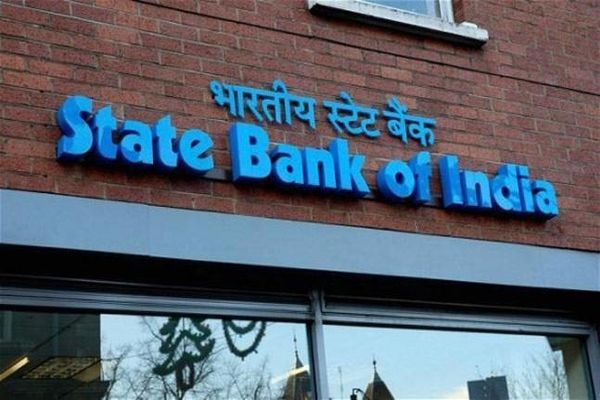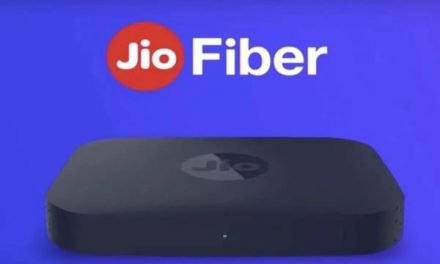Kisan Vikas Patra is a certificate scheme from the Indian post office. It doubles a one-time investment in a period of approximately 9 years & 10 months (118 months). For instance, a Kisan Vikas Patra for Rs. 5000 will get you a corpus of Rs. 10,000 postmaturity. In this article, we will explore the features and potential of this scheme
This scheme was introduced by India Post in 1988. Even though this scheme was popular, a Government Committee formed in 2011 suggested that KVP could be misused for purposes like money laundering. In 2014, Kisan Vikas Patra was relaunched with a number of changes including mandatory PAN card proof for investments over Rs.50,000 and income source proof for investments exceeding Rs.10 lakh.
The main advantage of KVP investment is the availability and ease of process; KVP certificates are issued in Post Offices across the country. Any resident Indian can invest in a KVP scheme and can obtain a certificate either jointly or individually, or in the name of a minor. The principal amount invested in KVP will be doubled in 9 years and 4 months (i.e. 112 months) from when they were issued. The main target audience for this scheme is people in semi-urban and rural areas.
Types of Certificates Available
A Kisan Vikas Patra certificate can be of the following types:
- Single Holder Type Certificate: This kind of certificate is issued to an adult for self or on behalf of a minor or to a minor.
- Joint ‘A’ Type Certificate: This type of certificate is issued jointly to two adults, payable to both the holders jointly or to the survivor.
- Joint ‘B’ Type Certificate: This type of certificate is issued jointly to two adults, payable to either of the holders or to the survivor.
Who should invest in the KVP scheme
Any Indian citizen above age 18 can buy a Kisan Vikas Patra from the nearest post office. People from rural India (with no bank account) find this particularly appealing. You can also buy one for a minor or jointly with another adult. Don’t forget to mention the date of birth of the minor and the name of the parent/guardian. A Trust can also buy one, but not an HUF or an NRI. KVP is a good choice for risk averse individuals, who have surplus money, which they may not require in the near future. It all depends on your risk profile and goals. For instance, people seeking tax-saving schemes have better options like Public Provident Fund, National Saving Certificates and tax-saving bank FD Schemes. If you are open for some level of risk exposure, you have the Equity Linked Savings Scheme (ELSS). Hence, play to your financial strengths.
Features & benefits of Kisan Vikas Patra
Guaranteed returns
Regardless of the market fluctuations, you will get the sum guaranteed. As this scheme was originally intended for the farming community, the priority was to encourage them to save for rainy days.
Capital protection
It is a safe mode of investment and not subject to market risks. You will receive the investment and gains when the tenure ends.
Interest
The effective interest rate for Kisan Vikas patra varies depending on the number of years invested in KVP at the time of purchase. The current interest rate is 7.7% for the quarter 1 October 2018 to 31 December 2018 prior to which the rate was 7.3%, compounded yearly. By compounding the interest, you will receive more returns on your deposit.
Tenure
The maturity period for Kisan Vikas Patra is 118 months and you can avail the corpus then. The maturity proceeds of KVP will continue to accrue interest till you withdraw the amount.
Taxation
It doesn’t come under the 80C deductions, and the returns are completely taxable. However, Tax Deducted at Source (TDS) is exempt from withdrawals after the maturity period.
Rules to premature withdrawal
You can withdraw the amount after 118 months. But the lock-in period is 30 months. Encashing the scheme early is not allowed, unless in the account holder’s demise or court order.
Ease & affordability
KVP is available in denominations of Rs. 100, Rs. 500, Rs. 1000, Rs. 5000, Rs. 10,000 and also Rs. 50,000 for investment. There is no maximum limit. Please note that denominations of Rs. 50,000 are available only at the head post office of a city.
Loan against KVP certificate
You can use your KVP certificate as collateral or security to avail secured loans. The interest rate is comparatively lesser for such loans.
Nomination facility
Collect a nomination form from the post office, and fill up the required information of the nominee. If you are nominating a minor, mention the date of birth.
KVP certificate issuance
If payment is done through cash, they issue the KVP Certificate on the spot. And for Cheque, Demand Draft or Money Order, you will have to wait till the amount is cleared to the post office.
KVP Identity Slip
This includes the Kisan Vikas Patra Certificate, the KVP serial number, the amount, the maturity date and the amount to be received on the date of maturity.
Kisan Vikas Patra Online
The process to invest in the Kisan Vikas Patra online scheme is simple. The steps mentioned below can be followed:
- You must obtain the KVP application form i.e. Form-A, from the post office.
- Furnish all the relevant details on the form and submit it at the post office.
- In case the investment is being made with the help of an agent, a second form will be required to be filled up and submitted. The agent must fill in Form-A1.
- Both the forms i.e. Form-A and Form-A1 are available for download on the official website as well. The forms can be downloaded online, filled up, and submitted.
- You will be required to furnish a copy of one of your identity proofs for the Know-Your-Customer (KYC) process. You can use one of the following documents – Aadhaar Card, Driving Licence, Passport, Voter ID Card, or PAN Card.
Your KVP Certificate will be issued once the documents provided by you are verified and the necessary deposits are made. You can also opt to receive the KVP Certificate through email. In that case, the certificate will be sent to you on the registered email ID.
Kisan Vikas Patra Eligibility
The following are the Kisan Vikas Patra eligibility:
- The applicant must be an adult and a resident Indian.
- The applicant can apply for Kisan Vikas Patra in their own name or on behalf of a minor.
- Trusts are eligible to invest in Kisan Vikas Patra. HUFs (Hindu Undivided Family) and NRIs are not eligible to invest in KVP.
Kisan Vikas Patra Interest Rate
The current interest rate was reduced from 7.6% to 6.9%. The maturity period was also increased from 113 months to 124 months. The principal amount can be withdrawn after this period only.
Here is an example of how interest accrues and doubles at maturity upon investment of Rs.1,000 in KVP on 1 October 2016 at an interest rate of 7.7%.
| Premature payments after | Amount payable (Rs.) |
|---|---|
| After 2 years 6 months or more but before 3 years | 1,176 |
| After 3 years more but before 3 years 6 months | 1,215 |
| After 3 years 6 months or more but before 4 years | 1,255 |
| After 4 years or more but before 4 years 6 months | 1,296 |
| After 4 years 6 months or more but before 5 years | 1,339 |
| After 5 years or more but before 5 years 6 months | 1,383 |
| After 5 years 6 months or more but before 6 years | 1,429 |
| After 6 years or more but before 6 years 6 months | 1,476 |
| After 6 years 6 months or more but before 7 years | 1,524 |
| After 7 years or more but before 7 years 6 months | 1,575 |
| After 7 years 6 months or more but before 8 years | 1,626 |
| After 8 years or more but before 8 years 6 months | 1,680 |
| After 8 years 6 months or more but before 9 years | 1,735 |
| After 9 years or more but before maturity | 1,793 |
| On maturity i.e. after 9 years 4 months | 2,000 |
Steps to invest in Kisan Vikas Patra and documents required
Investing in Kisan Vikas Patra is simple, as mentioned below. Step 1: Collect the application form, Form A, and fill the form with the necessary information. Step 2: Submit the duly filled form to the post office or bank. Step 3: If the investment in KVP is through an agent, then the agent should fill Form A1. You can download these forms online. Step 4: The Know Your Customer (KYC) process is mandatory and you need to submit the ID and address proof copy (PAN, Aadhaar, Voter’s ID, Driver’s License, or Passport). Step 5: Once the documents are verified, you must make the deposit. The payment can be made by cash, locally executed cheque, pay order, demand draft is drawn in the favour of the postmaster. Step 6: You will get a KVP certificate immediately unless you make payment by cheque, pay order, or demand draft. Keep this safe as you will need to submit this at the time of maturity. You can also request them to send you the certificate by email. In short, if Kisan Vikas Patra seems like a worthwhile investment that matches your financial goals, invest immediately. It is easy enough to open and manage. All you need to do is have the amount ready and pay one visit to the nearest post office.
Nomination
Single holders or joint holders of a certificate can make a nomination by filling up the details in Form C at the time of purchase. You can nominate any person so that the nominee will be entitled to the benefits of the certificate in the event of the death of the single holder or both the joint holders. If the nomination is not made at the time of purchase, the single holder, joint holders, or the surviving joint holder can make a nomination at any time after the purchase of the certificate but before the maturity by submitting the duly filled Form C. Submit it to the postmaster or bank officer where the certificate is registered. However, no nomination can be made if the certificate is applied for and held by or on behalf of a minor. If a nomination is made in this case by the holder or holders of the certificate will be cancelled or altered using Form D. When you have more than one certificates registered on different dates, you have to make separate applications for the nomination, cancellation of the nomination, or variation of the nomination. Such an application will be effective from the date of its registration and will be noted on the certificate. Nominations made for the first time is free-of-cost. Subsequent nominations or cancellation will be charged at Rs.20 per application.
Latest Update
Kisan Vikas Patra scheme interest rates reduced by 70 bps
The Central Government reduced the interest rate of the Kisan Vikas Patra scheme by 70 basis points (bps). The interest rate was reduced from 7.6% to 6.9%. The maturity period was also increased from 113 months to 124 months. The government decreased the interest rates of small savings schemes by up to 140 bps. The scheme is a Government of India initiative, where the minimum amount that must be deposited is Rs.1,000. There is no upper limit on the amount that can be invested in the scheme. The government decided to reduce the interest rates on small savings schemes after the RBI reduced the repo rate of 75 basis points. The government revises the interest rates of small savings schemes on a quarterly basis.
Source: Cleartax











